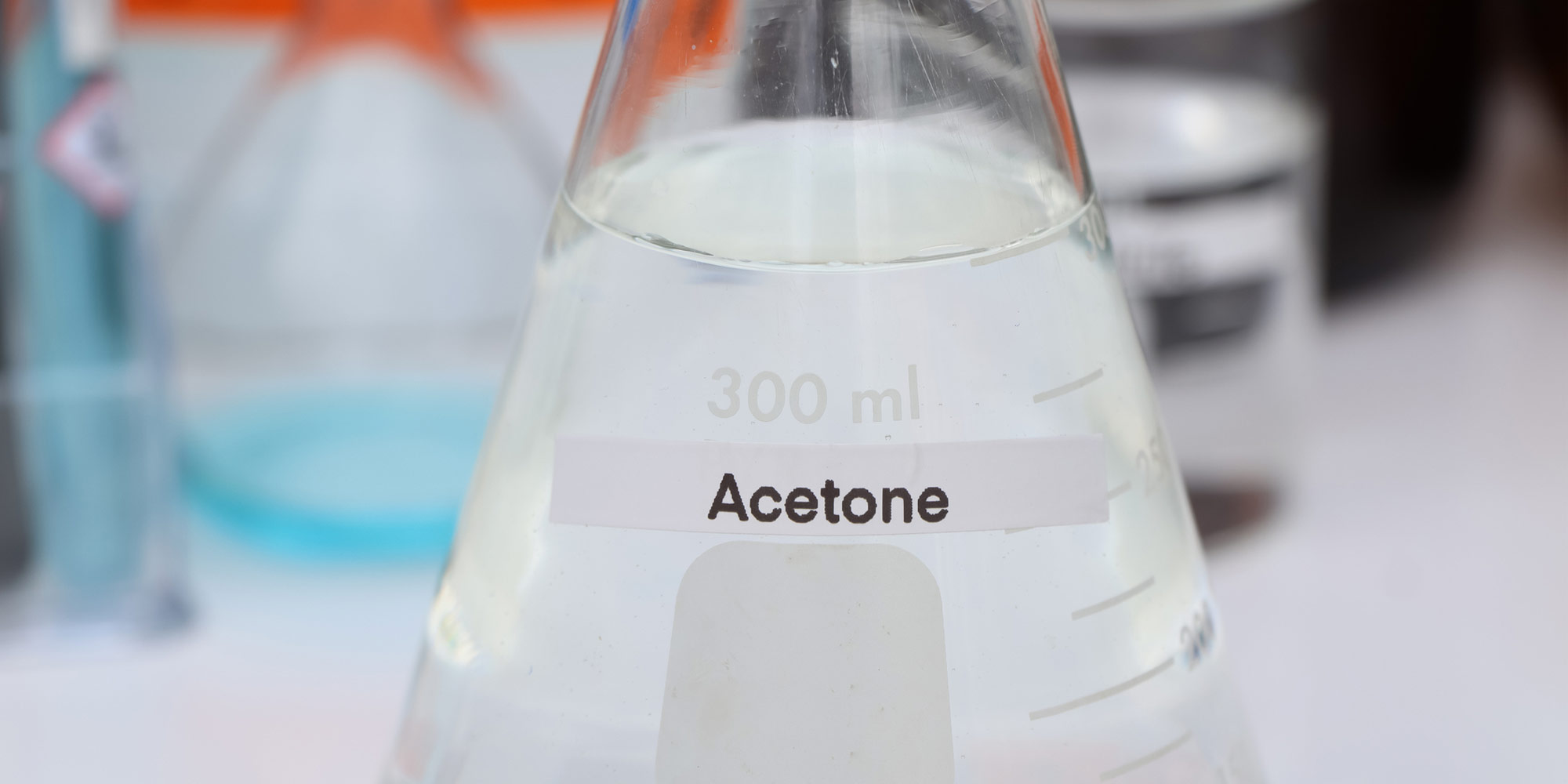The Uses Of Food Grade Acetone
By Adrian Dingle
Acetone in your bathroom cabinet, not in your kitchen
If they recognize it at all, most people would probably only associate acetone with nail polish remover. After all that’s exactly what it is. That instantly recognizable smell, with the accompanying cold feeling that one gets on the skin as the liquid spontaneously evaporates, is by far the most common experience that the average person will have with this organic compound.
Acetone is a naturally occurring chemical that is routinely produced in the human body. It can be found in many household products including garden pesticides. Acetone a popular solvent in many situations, and for a couple of reasons. Firstly, its miscibility with water, and secondly its ability to evaporate easily. One of the downsides is its high flammability which can lead to safety concerns when using and storing it.
Acetone defined
Acetone is the simplest member of a group of organic chemicals known as ketones. It has the formula (CH3)2O, and the IUPAC name propanone.

It is also referred to as 2-propanone, propan-2-one, and dimethyl ketone among other names. It’s a colorless, flammable liquid at room temperature, with a strong and distinct, solvent-like aroma. Acetone is miscible with water and volatile, and has a boiling point of only 56°C.
What’s a ketone?
A ketone is a functional group (a small group of atoms that exhibit certain chemical behaviors) in organic chemistry, that consists of a carbonyl group (a carbon atom double-bonded to an oxygen atom) with other carbon containing groups flanking it on each side. In general,

and in the case of acetone where the “R” groups in the molecule shown above are methyl, CH3, groups.
Acetone in food?
Because of the ubiquitous nature of nail polish remover and its purpose, acetone isn’t really a substance that one might associate with food in any way. In that light, it’s important to understand what the term ‘Food Grade’ means, and perhaps as important to appreciate what it does not mean. ‘Food Grade’ doesn’t necessarily indicate that the chemical in question is actually put into food; rather that it is of a standard of purity that allows it to come into contact with food during the manufacturing, packaging, transportation, or delivery process.
To be honest, the use of pure acetone in food itself is relatively unusual. Although generally regarded as safe (GRAS) by the Federal Drug Administration (FDA) in the USA, there are very few examples of the solvent being added directly to food. It can be used as a flavoring agent, but this is not common.
With its direct use put to one side, there are a few examples of compounds derived from, or related to, acetone being used in the food and beverage industry.
Derivatives of acetone in food and food manufacture
Acetone peroxide (C6H12O4) is one such compound, and has been used as a bleaching agent for flour. Naturally occurring flour can have a yellow tinge, and the addition of acetone peroxide will turn the flour to a bright white color before its use in bread making and in producing other baked goods.

Another compound used in foods and related to acetone is geranylacetone, IUPAC name 3,7 dimethyl-2,6 octadienyl acetone.

Geranylacetone is a natural occurring compound that is found in several plants. It has what is sometimes described as a ‘fresh and light floral fragrance’, and has elements of rose in the nose and flavor. It is widely used in as natural flavor enhancer, as well as in perfumes.
Acetone in food processing
Not only might acetone and related compounds be found in food, but they can also be found in the processing of food.
Naturally occurring vegetable oils need to be extracted from their parent plants before they can be used. Whether the oil is coming from a seed or nut or stem, there must be a method of obtaining the pure oil from its source. Some methods are physical in nature (squeezing or crushing), but others involve a chemical process known as solvent extraction.
In its simplest form, solvent extraction involves the solvent (in this case acetone) being mixed with the plant source. The acetone pulls the oil from the plant, and then the solvent is separated from the oil to leave the pure product behind. It’s obvious that the solvent should be safe, i.e., non-toxic, and its ability to be easily separated is important. Acetone’s relatively low boiling point means that it is quite easy to evaporate the solvent, leaving the pure oil behind.
Hexane (C6H14) is another popular solvent used in the extraction of oils, but depending on the specific application, mixtures of hexane and acetone can be even more effective.
Acetone is also used in the extraction of what are known as spice oleoresins. These are typically liquid or soft solid mixtures that are obtained by the solvent extraction of multiple spices.
The oleoresins tend to have very intense and concentrated flavors, and are commonly used in foods as combination flavorings and colorings. The FDA allows certain levels of acetone to be present and left over in the oleoresins.
What about indirect contact with food?
This is where the term ‘Food Grade’ can come into its own. This allows chemicals such as acetone to come into contact with food during the manufacturing, preparation, transportation or delivery process, without ever becoming an essential part of the food which is finally consumed. Acetone is a good example of ‘Food Grade’ chemical which is used in this way.
The FDA has deemed acetone suitable to be used as “an indirect food additive in adhesives and in food contact coatings.” This means that it can be used in the glues used in food packaging safely. Acetone can also be used as a cleaner for equipment and for the surfaces that food might come into contact with as it is manufactured and prepared.
< Back


